Posted on June 7th, 2010 by ASEE
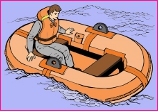 Do your students have what it takes to survive and be rescued? In this activity from Boston’s Museum of Science, student teams practice the design skills of engineers as they create survival tools from a crate of supplied materials. They learn about teamwork, brainstorming, innovation, and creative material reuse in attempting to create a protective shelter, a method for gathering food, and a signal for help. The teams test their designs for feasibility before having a design review with the rest of the class.
Do your students have what it takes to survive and be rescued? In this activity from Boston’s Museum of Science, student teams practice the design skills of engineers as they create survival tools from a crate of supplied materials. They learn about teamwork, brainstorming, innovation, and creative material reuse in attempting to create a protective shelter, a method for gathering food, and a signal for help. The teams test their designs for feasibility before having a design review with the rest of the class.
Read More
Filed under: Class Activities, Grades 6-8, Grades K-5 | 2 Comments »
Tags: Engineering Design Process, Grades 4-10, Lesson Plan
Posted on June 7th, 2010 by ASEE
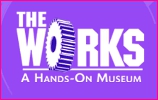 This simple lesson from The Works Museum in Minnesota consists of two activities that introduce elementary school students to the engineering design process. Students first work through a chart detailing the steps of the design process and then use the steps to consider ways to solve one of three problems: rescuing a trapped kitten, devising a way to water plants while on vacation, and rigging up a remote light switch.
This simple lesson from The Works Museum in Minnesota consists of two activities that introduce elementary school students to the engineering design process. Students first work through a chart detailing the steps of the design process and then use the steps to consider ways to solve one of three problems: rescuing a trapped kitten, devising a way to water plants while on vacation, and rigging up a remote light switch.
Read More
Filed under: Class Activities, Grades 6-8, Grades 6-8, Grades K-5, Grades K-5, Lesson Plans | 1 Comment »
Tags: Engineering Design Process, Grades 4 - 8, The Works museum
Posted on May 17th, 2010 by Jaimie Schock
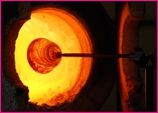 In this activity, elementary and middle school students learn about glass and the techniques for making it, especially glass blowing. Then, students experiment with honey to get a feel for how glass is blown, and butter, to learn how temperature changes affect a material.
In this activity, elementary and middle school students learn about glass and the techniques for making it, especially glass blowing. Then, students experiment with honey to get a feel for how glass is blown, and butter, to learn how temperature changes affect a material.
Read More
Filed under: Class Activities, Grades 6-8, Grades K-5 | Comments Off on Activity: Glass Blowing Simulation
Tags: Glass, Glass engineering, Lesson Plan
Posted on May 17th, 2010 by ASEE
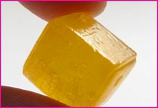 This lesson uses candy as a medium to illustrate the creation of glass, engaging students in three separate experiments as they predict, observe, and record the outcome of varying controls. The lesson is drawn from the curriculum “Contrasts: A Glass Primer,” developed by the Museum of Glass in Takoma, Washington, which aims to help students comprehend the medium of glass, while emphasizing oppositions in its creation, use, and aesthetics.
This lesson uses candy as a medium to illustrate the creation of glass, engaging students in three separate experiments as they predict, observe, and record the outcome of varying controls. The lesson is drawn from the curriculum “Contrasts: A Glass Primer,” developed by the Museum of Glass in Takoma, Washington, which aims to help students comprehend the medium of glass, while emphasizing oppositions in its creation, use, and aesthetics.
Read More
Filed under: Class Activities, Grades 6-8, Grades K-5 | 1 Comment »
Tags: Chemical Engineering, Crystal study, Glass engineering, Manufacturing Engineering
Posted on May 3rd, 2010 by ASEE
 Using a plasma ball or lightning globe, students in grades 3-5 test various objects to see if they pull the electric current generated by the globe to them. Students then explore how the globe excited electrons inside the fluorescent bulbs to make them light.
Using a plasma ball or lightning globe, students in grades 3-5 test various objects to see if they pull the electric current generated by the globe to them. Students then explore how the globe excited electrons inside the fluorescent bulbs to make them light.
Read More
Filed under: Class Activities, Grades K-5, Grades K-5, Lesson Plans | Comments Off on Lesson Plan: Plasma Globes and Electricity
Tags: Class Activities, Curriculum, Grades 3-5, Lesson Plan, Plasma Physics
Posted on April 26th, 2010 by ASEE
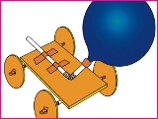 What more fun way to demonstrate Newton’s Third Law – every action has an equal and opposite reaction – than through a balloon-powered rocket car? In this lesson from NASA Quest, students grades 4-8 construct their cars from simple materials, test them along a measured track, then work to modify them for improved performance.
What more fun way to demonstrate Newton’s Third Law – every action has an equal and opposite reaction – than through a balloon-powered rocket car? In this lesson from NASA Quest, students grades 4-8 construct their cars from simple materials, test them along a measured track, then work to modify them for improved performance.
Read More
Filed under: Class Activities, Grades 6-8, Grades K-5 | 3 Comments »
Tags: NASA
Posted on March 29th, 2010 by Jaimie Schock
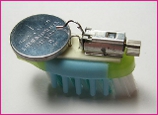 BristleBots are one variety of the popular vibrobot, a simple category of robot controlled by a single vibrating motor. This BristleBot is made from a toothbrush and a few low-cost materials and can easily be modified for additional challenge.
BristleBots are one variety of the popular vibrobot, a simple category of robot controlled by a single vibrating motor. This BristleBot is made from a toothbrush and a few low-cost materials and can easily be modified for additional challenge.
Read More
Filed under: Class Activities, Grades 6-8, Grades 9-12, Grades K-5 | 1 Comment »
Tags: Building robots, Class Activities, DIY, Lesson Plan, Robotics
Posted on March 22nd, 2010 by Jaimie Schock
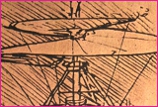 Across three or more class periods, students in grades 4-8 combine their own ideas with the elements of machines to imagine and design inventions to solve specific challenges. Using a variety of materials, they can create small working models of their inventions to test and improve them.
Across three or more class periods, students in grades 4-8 combine their own ideas with the elements of machines to imagine and design inventions to solve specific challenges. Using a variety of materials, they can create small working models of their inventions to test and improve them.
Read More
Filed under: Class Activities, Grades 6-8, Grades K-5 | Comments Off on Activity: Be Inventive!
Tags: Class Activities, Da Vinci, Grades 4 and 5, Grades 6-8
Posted on March 15th, 2010 by ASEE
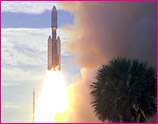 In this simple, exciting demonstration of Newton’s Laws of Motion, students in grades 5-8 construct a rocket powered by the pressure generated from an effervescing antacid tablet reacting with water. They undertake the work of aerospace engineers in exploring design elements that can affect a spacecraft’s performance.
In this simple, exciting demonstration of Newton’s Laws of Motion, students in grades 5-8 construct a rocket powered by the pressure generated from an effervescing antacid tablet reacting with water. They undertake the work of aerospace engineers in exploring design elements that can affect a spacecraft’s performance.
Read More
Filed under: Class Activities, Grades 6-8, Grades K-5 | 3 Comments »
Tags: Aerospace, grades 5-8, NASA, Newton's Laws
 Do your students have what it takes to survive and be rescued? In this activity from Boston’s Museum of Science, student teams practice the design skills of engineers as they create survival tools from a crate of supplied materials. They learn about teamwork, brainstorming, innovation, and creative material reuse in attempting to create a protective shelter, a method for gathering food, and a signal for help. The teams test their designs for feasibility before having a design review with the rest of the class.
Do your students have what it takes to survive and be rescued? In this activity from Boston’s Museum of Science, student teams practice the design skills of engineers as they create survival tools from a crate of supplied materials. They learn about teamwork, brainstorming, innovation, and creative material reuse in attempting to create a protective shelter, a method for gathering food, and a signal for help. The teams test their designs for feasibility before having a design review with the rest of the class.








 This simple lesson from The Works Museum in Minnesota consists of two activities that introduce elementary school students to the engineering design process. Students first work through a chart detailing the steps of the design process and then use the steps to consider ways to solve one of three problems: rescuing a trapped kitten, devising a way to water plants while on vacation, and rigging up a remote light switch.
This simple lesson from The Works Museum in Minnesota consists of two activities that introduce elementary school students to the engineering design process. Students first work through a chart detailing the steps of the design process and then use the steps to consider ways to solve one of three problems: rescuing a trapped kitten, devising a way to water plants while on vacation, and rigging up a remote light switch. In this activity, elementary and middle school students learn about glass and the techniques for making it, especially glass blowing. Then, students experiment with honey to get a feel for how glass is blown, and butter, to learn how temperature changes affect a material.
In this activity, elementary and middle school students learn about glass and the techniques for making it, especially glass blowing. Then, students experiment with honey to get a feel for how glass is blown, and butter, to learn how temperature changes affect a material. This lesson uses candy as a medium to illustrate the creation of glass, engaging students in three separate experiments as they predict, observe, and record the outcome of varying controls. The lesson is drawn from the curriculum “Contrasts: A Glass Primer,” developed by the Museum of Glass in Takoma, Washington, which aims to help students comprehend the medium of glass, while emphasizing oppositions in its creation, use, and aesthetics.
This lesson uses candy as a medium to illustrate the creation of glass, engaging students in three separate experiments as they predict, observe, and record the outcome of varying controls. The lesson is drawn from the curriculum “Contrasts: A Glass Primer,” developed by the Museum of Glass in Takoma, Washington, which aims to help students comprehend the medium of glass, while emphasizing oppositions in its creation, use, and aesthetics. Using a plasma ball or lightning globe, students in grades 3-5 test various objects to see if they pull the electric current generated by the globe to them. Students then explore how the globe excited electrons inside the fluorescent bulbs to make them light.
Using a plasma ball or lightning globe, students in grades 3-5 test various objects to see if they pull the electric current generated by the globe to them. Students then explore how the globe excited electrons inside the fluorescent bulbs to make them light. What more fun way to demonstrate Newton’s Third Law – every action has an equal and opposite reaction – than through a balloon-powered rocket car? In this lesson from NASA Quest, students grades 4-8 construct their cars from simple materials, test them along a measured track, then work to modify them for improved performance.
What more fun way to demonstrate Newton’s Third Law – every action has an equal and opposite reaction – than through a balloon-powered rocket car? In this lesson from NASA Quest, students grades 4-8 construct their cars from simple materials, test them along a measured track, then work to modify them for improved performance. BristleBots are one variety of the popular vibrobot, a simple category of robot controlled by a single vibrating motor. This BristleBot is made from a toothbrush and a few low-cost materials and can easily be modified for additional challenge.
BristleBots are one variety of the popular vibrobot, a simple category of robot controlled by a single vibrating motor. This BristleBot is made from a toothbrush and a few low-cost materials and can easily be modified for additional challenge. Across three or more class periods, students in grades 4-8 combine their own ideas with the elements of machines to imagine and design inventions to solve specific challenges. Using a variety of materials, they can create small working models of their inventions to test and improve them.
Across three or more class periods, students in grades 4-8 combine their own ideas with the elements of machines to imagine and design inventions to solve specific challenges. Using a variety of materials, they can create small working models of their inventions to test and improve them. In this simple, exciting demonstration of Newton’s Laws of Motion, students in grades 5-8 construct a rocket powered by the pressure generated from an effervescing antacid tablet reacting with water. They undertake the work of aerospace engineers in exploring design elements that can affect a spacecraft’s performance.
In this simple, exciting demonstration of Newton’s Laws of Motion, students in grades 5-8 construct a rocket powered by the pressure generated from an effervescing antacid tablet reacting with water. They undertake the work of aerospace engineers in exploring design elements that can affect a spacecraft’s performance.